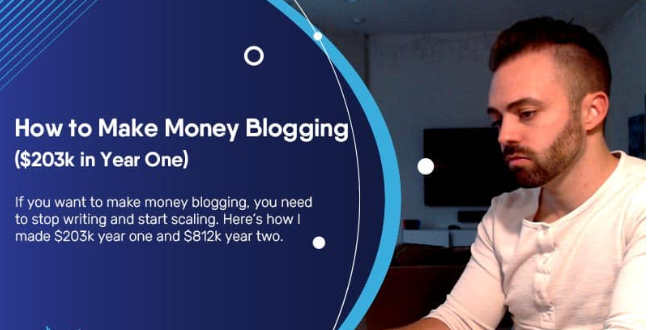Many users ask us how optimize videos for SEO.
This type of content has become more and more important in recent years and the way search engines index and place it in search results has also changed. The videos appear both in the general search results and in the section dedicated to them.
This motivated me not only to write this guide, but also to dedicate an entire section of my SEO course to video optimization.
Google uses similar criteria to determine the ranking of videos and other content, such as quality, number of inbound links or RankBrain (the machine learning used by its algorithm). Similar criteria don’t mean they are identical though, and considering all the time and resources you put into strategy mapping, producing and editing a video, it would be a shame if it wasn’t indexed correctly.
As you can see, there are many topics related to these issues: for a quick identification of the content you are looking for, discover our service SEO consultancywho can always show you how and where to find the resources you need. Start by clicking the button below.
Now we just have to start.
What is meant by optimizing videos for SEO?
Optimize videos for SEO it means that this type of content is indexed correctly and that it ranks among the results of Google’s organic searches and the like for specific keywords.
There are various ways to help search engines (and their bots ) analyze your videos. You can make them understand what they are about and increase the chances that they rank among the top results for the keywords (the keywords with which the content is indexed) you want to focus on. A bit like images, Google doesn’t know what they represent. Precisely for this reason it is necessary to use techniques to let the algorithms it uses know what the video is about.
With the exponential increase in the use of this type of content, the competition for placement has become much tougher. Videos can appear among the results of the “universal search”, ie the first page where you find combined various types of results, such as sites, news, business cards, videos and images. These are the results that are normally generated when you search for something on Google.
However, there is also a section of the results dedicated only to searching for videos, which you can access by clicking on “Video”.
Ranking on the universal search page is more difficult to achieve, as it depends a lot on the authority of your site, how much it focuses on videos, and how it ranks for searches for this type of content. Optimize videos for SEO it’s easier if you focus on video searches, and can give you more immediate results.
Below we see how to do it.
7 things to optimize videos for SEO
The 7 things I recommend to improve the SEO optimization of videos on your site are:
- choose the right video hosting platform
- select a preview image that arouses interest
- write the title and description of the video
- insert the transcript of the video
- put the video you want to position for first
- optimize the page for SEO and video content
- do not embed the video on multiple pages
Let’s go and examine them one by one.
1) Choose the right video hosting platform
Optimization starts with choosing the hosting platform for your video. You can decide to upload it to Youtube, Wistia or Vimeo, so as not to slow down the loading of the page too much.
Which platform to select depends on your goal. Youtube is certainly a very popular choice and is the second largest search engine in the world. If the purpose of the video is to increase your brand awareness, Youtube and Vimeo are choices to consider.
The downside is that when this content is indexed, most of the traffic is directed to these platforms rather than to your site. At the end of the video, your viewers may get distracted and click on other suggested videos.
You can of course enter a link to your domain and curate your account if you regularly produce tutorials and other types of videos. Actively moderating comments can also help you engage users, if they are active on this specific network.
Other video hosting
If your goal is to drive traffic to your site and get leads (what drives traffic to your site) and conversions, you may want to explore other alternatives, such as Wistia . One of the good things about using this platform is that it automatically inserts meta data for SEO via JSON-LD, helping you tooptimize videos for SEO.
One of the most popular sites that embed videos via Wistia is Moz.com, which uses it for its “ Whiteboard Friday ” series, where the founder talks about SEO every Friday.
Other hosting services can create structured data using Schema markup, which can help you with ranking in universal searches by making the video appear on that page as it appears in video searches. This means that there will be a preview image, the title and the duration of the video.
If you need to create structured data, you can find more information on the Google developer page and use the markup testing tool .
Other hosting platforms may require you to create a sitemap for videos.
The latter tool can help you make Google’s crawlers (algorithms that search for content) discover the videos hosted on your site. You can create a sitemap (sitemap) for your videos or add the videos to your sitemap, then submit it to Google via the Search Console .
The various videos must be added in the sitemap including title, description, URL, preview image, URL of the file. You then need to make sure that this data matches what’s on your site. You can also include duration, rating, and category.
2) Select a preview image that arouses interest
As I mentioned above, one of the important elements to include in your metadata and sitemap is the preview image.
It’s the first thing users see in search results, and its goal is to get them to click. Choose an image that is relevant and interesting, but that means something.Optimize videos for SEO therefore it also means avoiding an automatic preview. Use an image that is beautiful and dynamic at the same time. You can enter text that relates to the topic of the video or include a person in the photo. According to Wistia, their videos with a person in the preview tend to have a higher view rate .
Do not underestimate the importance of the preview image, because it is the one that will appear even when the links are shared or embedded elsewhere, if there is no automatic display function (like on Facebook).
Make sure that the image is visible when it is reduced to 116 × 65 pixels, because that is how it appears in the search results.
3) Write the title and description of the video
If you take care of the SEO of your blog, you will have already dealt with titles and meta descriptions . These are also important for user engagement and the SEO of your videos. Make sure you create titles and descriptions that include keywords that are relevant to your content and your niche, but are also engaging for users.
Make a list of keywords you would like to use, then use the Keyword Planner to estimate their search volumes and competition. Finally, go to Google to research these keywords, analyzing the results that come out for each. See similar videos and sites? You’re on the right track, also use Google’s autocomplete options to get more ideas on how users like you can search for the content you offer.
Remember, Google’s algorithm penalizes those who fill in titles and descriptions with keywords , so write something that is useful for the user and naturally contains the main keyword.
Then re-read what you wrote and ask yourself if you find it interesting.
Remember the character limits: keep the title below 60 characters and the meta description below 200. Although Google has increased the length of meta descriptions for websites to 300, as you can see in the previous image, the video descriptions they appear to be truncated towards 100 characters.
4) Enter the transcript of the video
Video transcripts make it easier for Google bots to work, as well as being useful for your users who prefer to read rather than listen to or watch a video.
It is also advisable to load subtitles, to make the video usable even by those who watch it with the sound off.
You can transcribe the content verbatim, or summarize the highlights. The first option gives you more opportunities to include keywords, while summarizing the content can help intrigue users and persuade them to watch the video. To understand what works best for your niche you can use A / B testing .
5) Put the video you want to position for first
Since Google only indexes one video per page, if you plan to embed others, make sure that the most important one you want to rank for is the first to appear on the page.
Also make sure that the video is prominent on the page and that users don’t have to scroll down to see it. This could negatively affect the number of views and clicks.
6) Optimize the page for SEO and video content
Google also analyzes the context in which the video is placed. For this you have to make sure that the rest of the page is also optimized for search engines and that its content is linked to that of the video.
7) Don’t embed the video across multiple pages
The video you are optimizing for SEO should not be included on multiple pages of your website. This is to avoid competing against yourself.
Conclusion
When making a video, the first things to think about are the intent and needs of your users, in order to create valuable content. Once the video has been created, however, you must optimize it in an SEO key, to make sure that those looking for information on the subject can find it.
For this you have to choose the hosting platform that best suits your goals, add transcripts and meta data and optimize the page where you decide to upload the video.
Don’t stop there. Once you’ve created the video, make sure you take advantage of it as much as possible and also promote it on social media (Facebook, Twitter, Instagram, LinkedIn and Youtube). If you have the opportunity to do so, you can also use it for paid advertising campaigns, as long as you edit it so that it respects the duration, size and format of the platform on which you want to promote it.
Do you use video as part of your marketing strategy?
Have you ever tried optimizing videos for SEO on your site?
Or do you plan to do it?
Share your experience in our private SEO community. Simply request your PASSWORD and you will have SEO training videos available every week.




